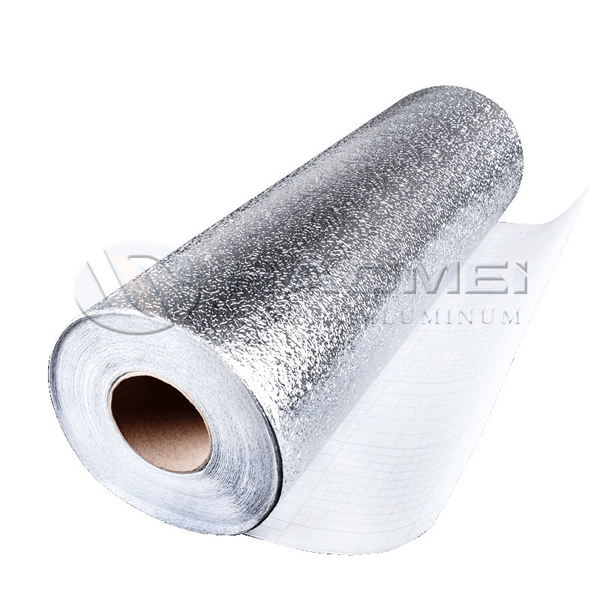Aluminum has a natural low emissivity value of .03. This means that aluminium will only allow 3% of radiant heat that comes in contact with its surface to pass through it, the rest will be reflected back to the source.

Reflective foil insulation has a long and interesting history that you may not know about. Perhaps its most colorful use is in the space program. During the space race of the 1950s, NASA scientists were confronted with the challenge of developing an insulating product that would protect astronauts from extreme temperature shifts, ranging from -273 degrees Celsius to +238 degrees Celsius. It was impossible to craft a useful space suit from conventional insulating materials because the suit would have to be several feet thick to work properly. The solution to this tricky problem was to employ reflective foil insulation within it to streamline it more and making it bearable to wear.
Aluminium reflection foil is an inexpensive way to make your underfloor heating more energy efficient.
Underfloor heating systems are much more energy efficient than traditional heating systems, due to the equal heat distribution throughout the room and the lower temperatures required to heat the same space. Nevertheless, there are still gains to be achieved by limiting heat loss and displacing the cold from below. This is where aluminium reflection foil can be a great asset to any underfloor heating systems. At a minimal build height, Aluminium reflection foil is the perfect solution to reduce heat loss.
Aluminum reflection foil is a reflective film that consists of a dual layer aluminium foil reinforced by a fibreglass mesh in the centre, allowing for a thin, yet rigid installation. This combination is an effective heat conductor, and it can play a valuable role as an insulator.
Reflective Foil Insulation – Protection From Both Hot And Cold
Reflective insulation used in space suits serve a double purpose. They reflect dangerous radiant energy from the outside of the suit, which would quickly cause an astronaut to overheat. Foil insulation also retains an astronaut’s own radiant heat energy to help keep them warm in the cold environment. NASA also uses radiant barrier inside its space shuttles. This allows the crew to live and work within the space shuttle without having to wear heavy and cumbersome space suits. In fact, radiant barrier technology is used throughout the space program. These aluminum insulation products protect the shuttles themselves, as well as the mechanical and computerized components within them.



